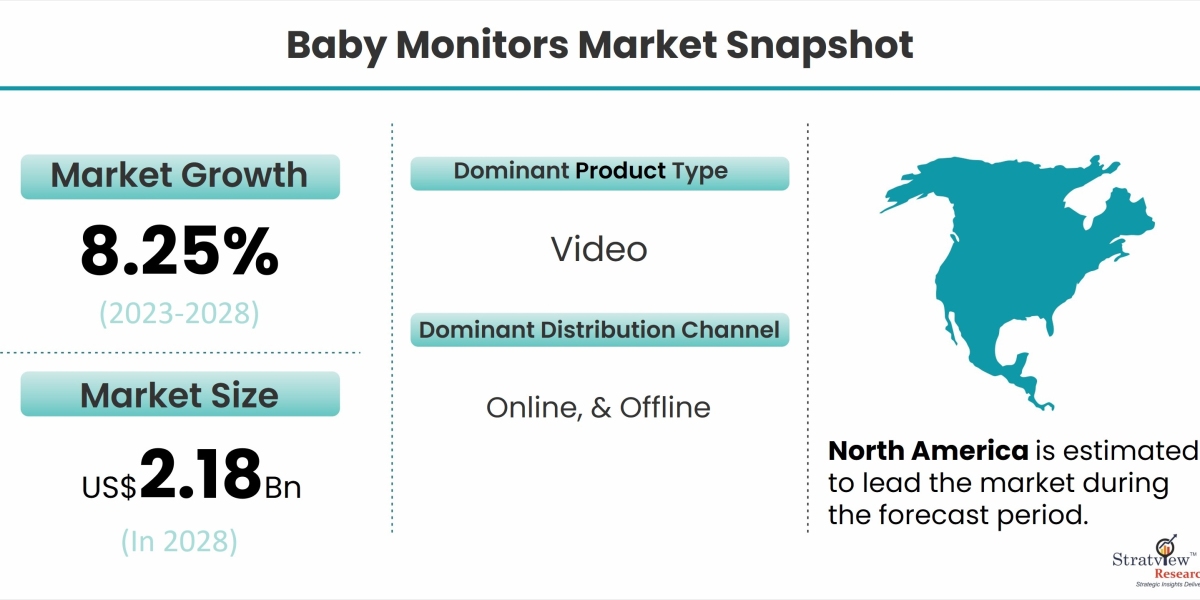According to Stratview Research, the baby monitors market was estimated at USD 1.36 billion in 2022 and is likely to grow at a CAGR of 8.25% during 2023-2028 to reach USD 2.18 billion in 2028.
When it comes to baby monitors, parents are faced with an important decision: should they opt for an audio-only monitor or invest in a video monitor that provides both audio and visual feedback? Both types of monitors have their own set of advantages and considerations. In this article, we'll explore the key differences between audio and video baby monitors to help you decide which one is right for your needs.
Audio Baby Monitors:
Audio baby monitors have been a staple in nurseries for decades, providing parents with the ability to hear their baby's sounds and cries from another room. Here are some key features and considerations when it comes to audio monitors:
Pros:
Simplicity: Audio monitors are simple to set up and use. They typically consist of a transmitter (placed in the baby's room) and a receiver (carried by the parent). There's no need to worry about video feeds or smartphone apps.
Less Expensive: Audio monitors are often more budget-friendly than their video counterparts, making them an attractive option for cost-conscious parents.
Reduced Privacy Concerns: Since audio monitors don't capture video footage, there are fewer privacy concerns related to these devices. You won't have to worry about video feeds being intercepted or hacked.
Cons:
Limited Information: Audio monitors only provide sound, which means you won't have a visual on your baby. This limitation can make it challenging to assess your baby's needs, especially when they're no longer an infant.
No Visual Confirmation: If you hear your baby crying or making noise, you won't have visual confirmation of their safety and condition. You'll need to physically check the baby to ensure everything is okay.
Lack of Extra Features: Audio monitors typically lack additional features like temperature sensors, two-way communication, or lullabies, which are common in many video monitors.
Video Baby Monitors:
Video baby monitors, on the other hand, provide both audio and visual feedback, allowing you to see your baby in addition to hearing them. Here are the key features and considerations for video monitors:
Pros:
Visual Confirmation: Video monitors provide a live video feed of your baby's room, giving you visual confirmation of their safety and condition. This can be particularly reassuring for new parents.
Enhanced Information: With a video monitor, you can see if your baby is simply stirring in their sleep or if they need immediate attention. This added information can help you respond more effectively.
Additional Features: Many video monitors come with extra features like two-way communication, room temperature sensors, remote pan and tilt cameras, and even lullabies, which can enhance your baby's comfort.
Cons:
Cost: Video monitors are generally more expensive than audio monitors. The higher cost can be a deterrent for parents on a tight budget.
Privacy Concerns: Video monitors capture visual footage of your baby's room, which could be a concern for some parents worried about privacy and hacking risks. However, most modern video monitors come with secure encryption and password protection.
Setup Complexity: Video monitors may require a more complicated setup compared to audio monitors, which are usually as simple as plug-and-play.
Which Is Right for You?
The choice between an audio and a video baby monitor largely depends on your personal preferences and needs. Here are some considerations to help you decide:
Budget: If you're looking for a more budget-friendly option, an audio monitor may be the better choice.
Reassurance: If you want the added reassurance of seeing your baby, especially during the early months, a video monitor provides that peace of mind.
Room Layout: The layout of your home and the distance between your baby's room and yours can also play a role. If your baby's room is close by, an audio monitor might suffice. If they're farther away or on a different floor, a video monitor could be more practical.
Additional Features: Consider whether you want features like two-way communication or room temperature monitoring, which are commonly found in video monitors.
Ultimately, the right choice for you depends on your specific circumstances and preferences. Whether you opt for an audio or a video baby monitor, the most important thing is that it helps you keep a watchful eye (or ear) on your little one, providing the peace of mind that every parent deserves.









